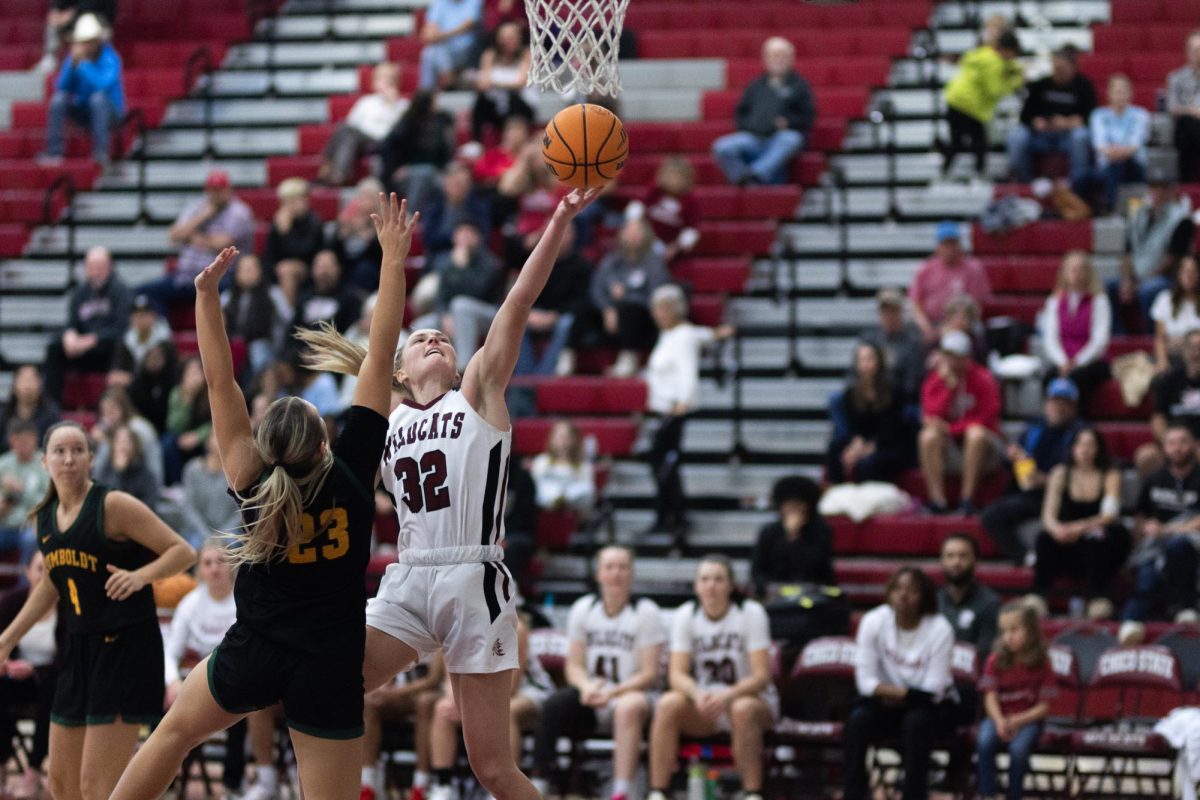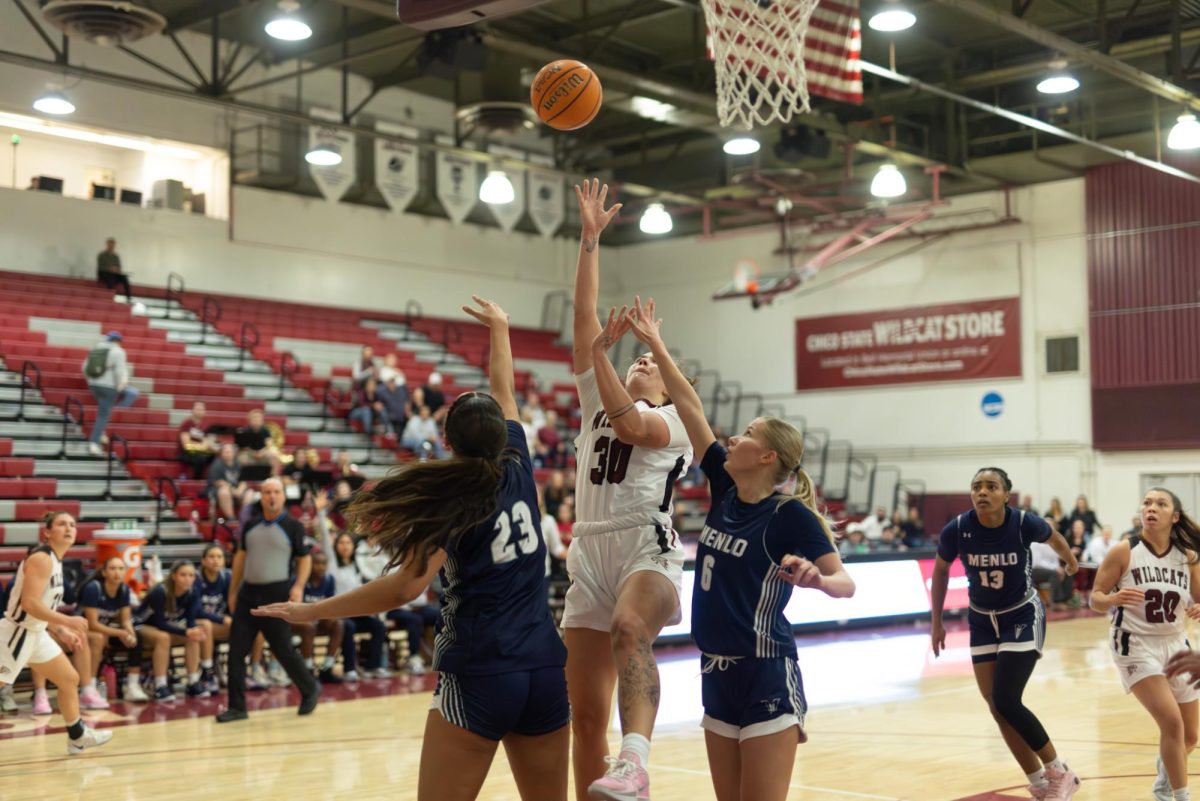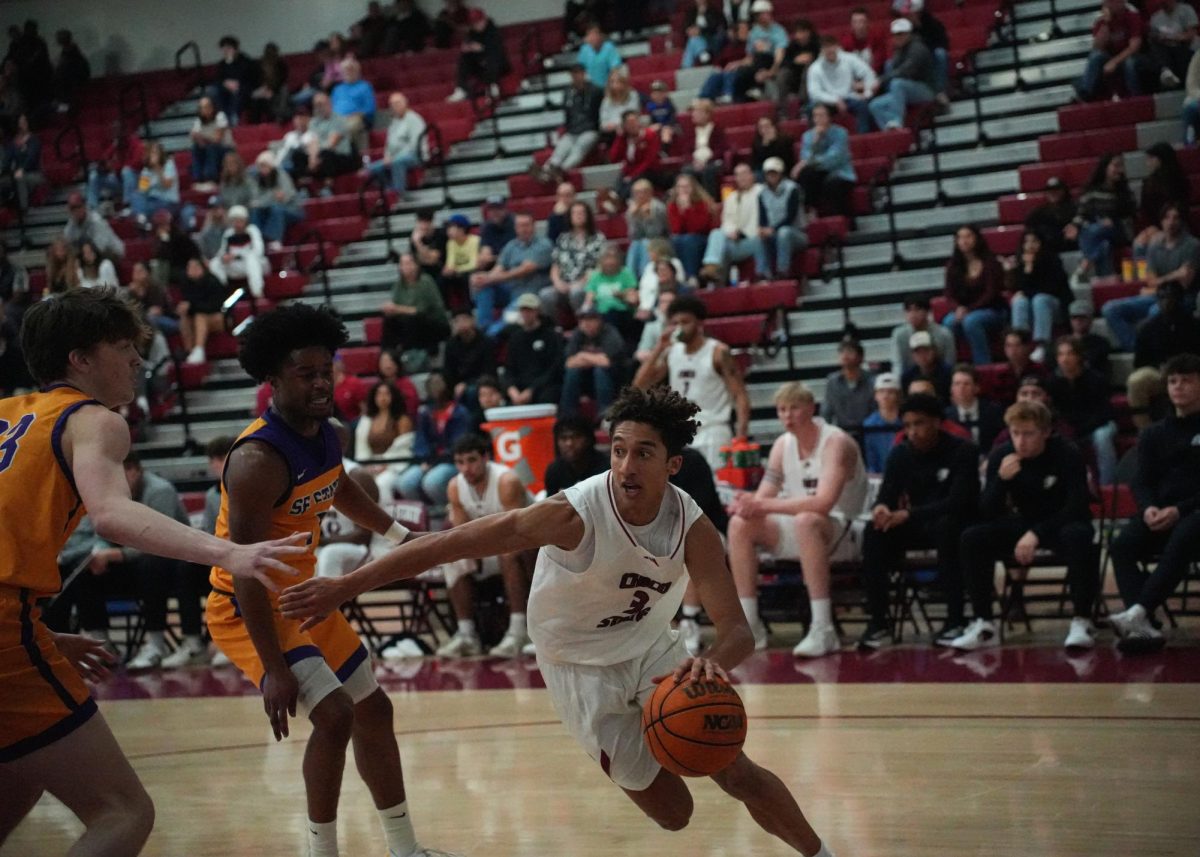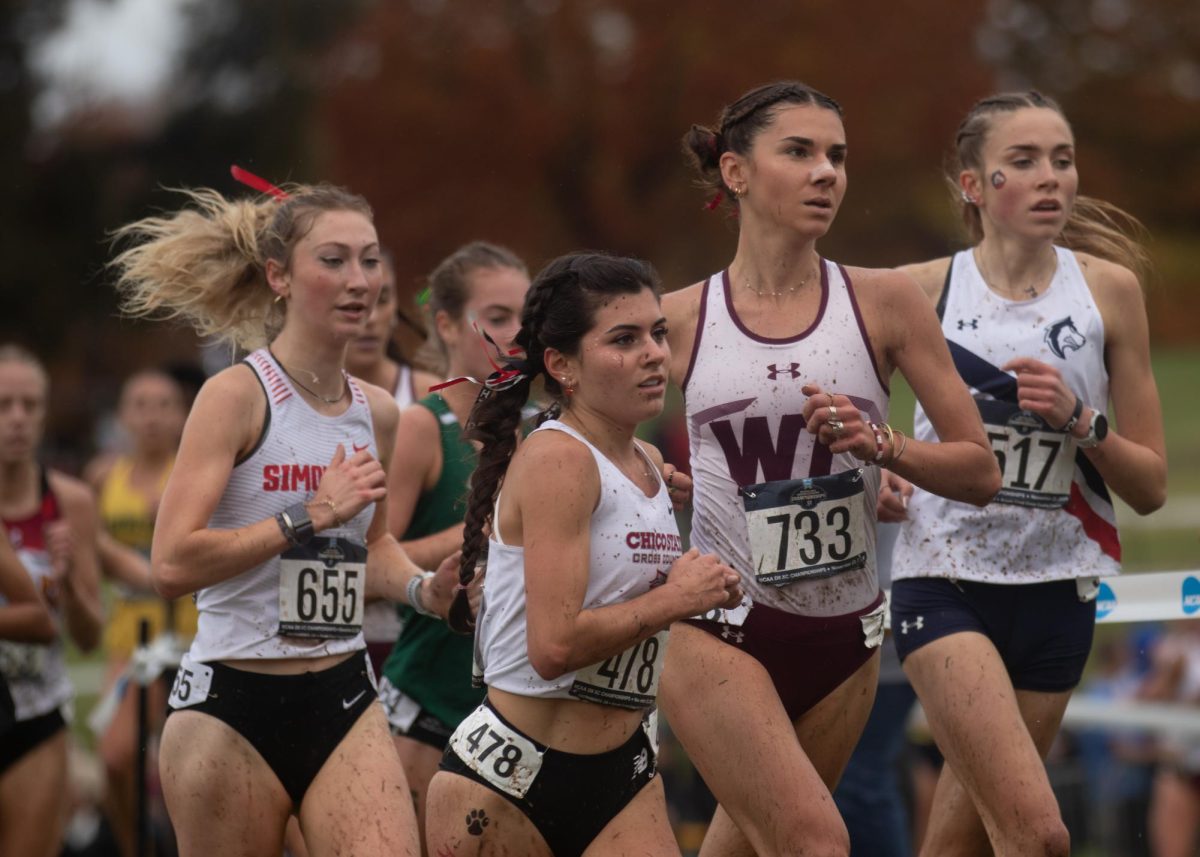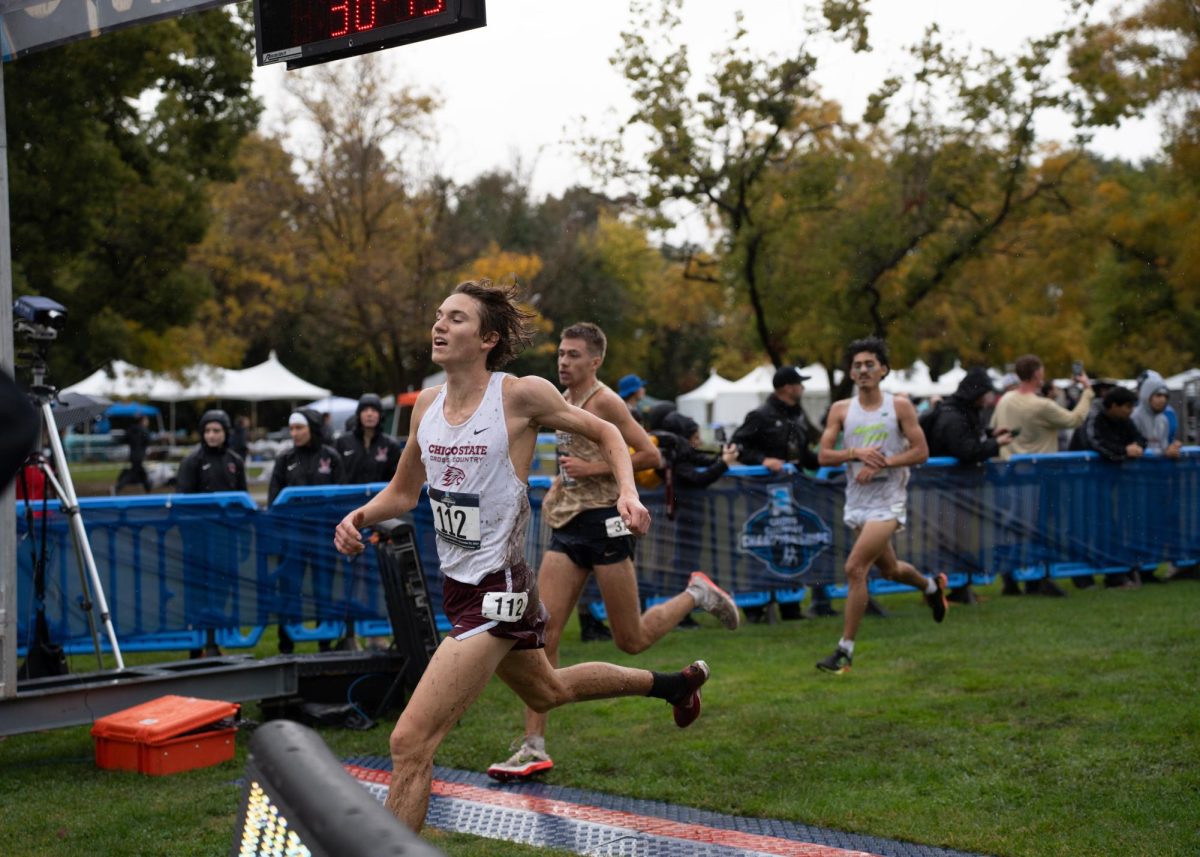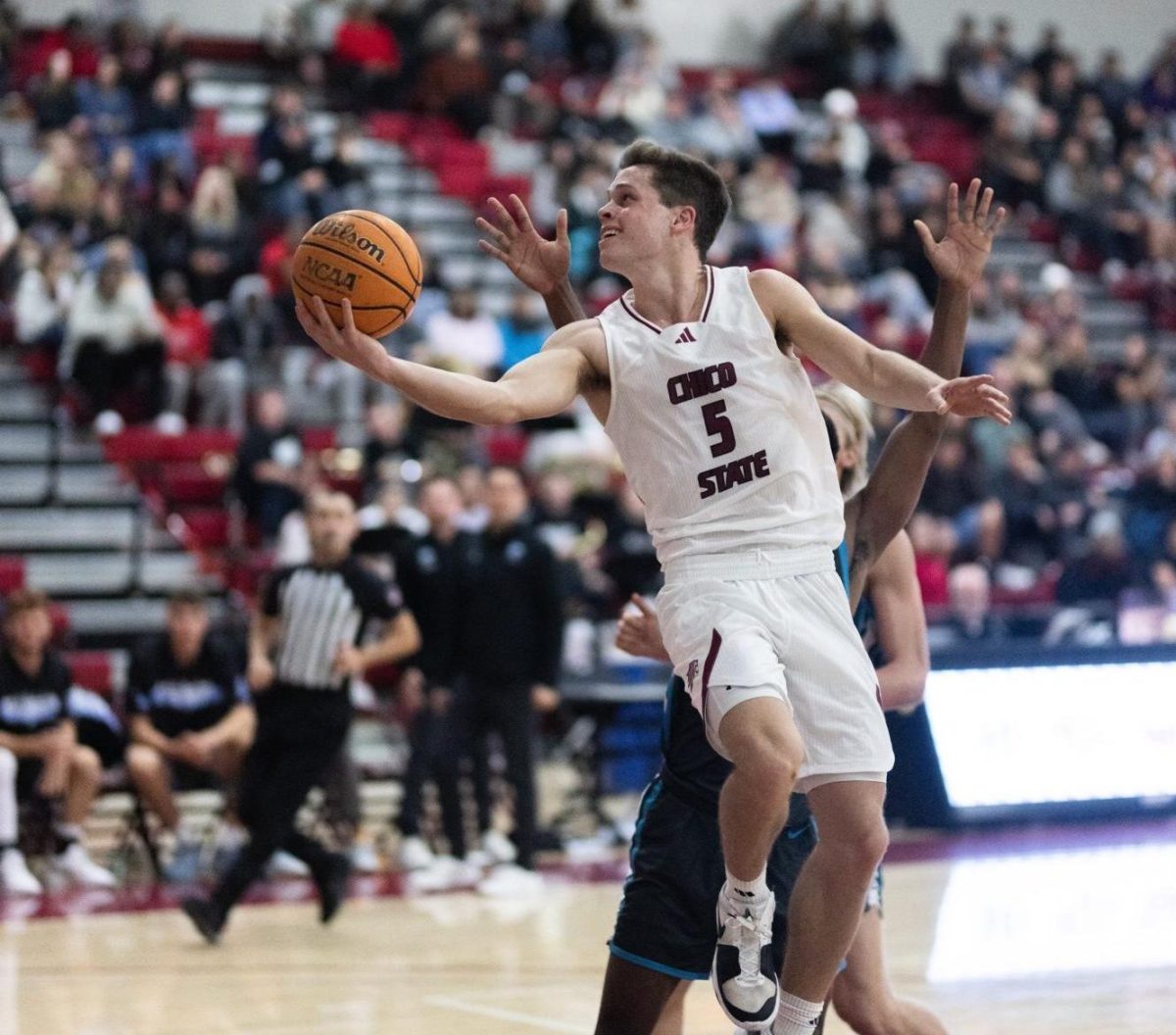
If a Wildcat athlete goes down in practice or in a game, the athletic trainers of Chico State are first on the scene.
Chico State’s trainers are trained professionals who are passionate about sports and the health of athletes.
Sergio Contreras specializes as the assistant athletic trainer for the men’s baseball team, while Tyler Lesher mostly works with the men’s basketball team.
Contreras and Lesher shared some of their favorite experiences while working with the Wildcats during the season.
Sergio Contreras — graduate assistant athletic trainer, men’s baseball
Are you a Chico State student or alumnus?
I am a graduate student in the kinesiology department. I did my undergraduate work at the University of the Pacific.
Why did you want to become an athletic trainer?
Because I like sports, and I enjoy helping others. Also, it’s fascinating to see an athlete overcome an injury and return back to play. As an athletic trainer, you get to be a part of the entire process.
Can you describe the relationship between player and trainer?
The relationship between athlete and athletic trainer is one of trust and respect. The athlete must trust the athletic trainer in the recommendations we make to help them get better.
What are the most crucial aspects of your job before and during games?
Setting up the proper equipment in case of an injury. During games, it’s important for athletic trainers to be on their feet and pay attention to detail in case an injury happens.
How did you become a trainer for Chico State?
I knew there was a graduate assistant opening and heard great things about the program so I decided to apply.
What are some of the differences in your job for the different sports you cover?
The nature of the injuries changes between soccer and baseball. For example, soccer has more lower extremity injuries compared to baseball. Baseball has more upper extremity injures.
Tyler Lesher — graduate assistant athletic trainer, men’s basketball
Are you a Chico State student or alumus?
(I am a) master’s student in Kinesiology with an athletic training option.
Why did you want to become a athletic trainer?
I realized I wasn’t going to be a professional basketball player in about eighth grade and wanted to work in the NBA. I suck at business and numbers, and anatomy and physiology were a couple things that came easy to me, and that is a big part of athletic training. So it just came natural to me that I could use athletic training as a way to work in the NBA.
What are the most difficult aspects of dealing with sports injuries?
Trying to get them to heal correctly without any other issues arising. There’s a fine line between pushing an injury to a point of therapeutic benefit versus pushing an injury too far and having negative consequences. It’s all about balance.
Do you have any favorite memories during your time as a Chico State sports trainer?
My favorite memories have come throughout the season, just going on our 10-game win streak and being first in conference. We always have good times on our road trips. Definitely one of the best parts of being an athletic trainer is that I had not been to California before moving here in August and being able to see the ocean for the first time and traveling everywhere from San Diego to Humboldt County.
Can you describe the relationship between player and trainer?
You have a professional relationship with them, but you definitely spend so much time together during a season that you become invested in the players and their well-being. If they get hurt, sick or anything, really they look to you for advice and to be the person to take care of them. It’s definitely a special bond that is created because some days you have to be the shoulder to lean on, and other days you have to be the person to tell them to suck it up and get back to practice.
What are the most crucial aspects of your job before and during games?
Prepping the team so that they are at their best going into the game, whether that be taping them, running them through rehab, various stretches and just making sure they are walking into the game feeling the best they can be. During games, I’m always on the watch for injury. Making sure that if they do get injured during the game or are bleeding that they are back out playing as soon as possible without further risk to them. But it’s like being a big brother, constantly looking out for them making sure that they’re alright and can continue to play.
What are the most common injuries in the sports you cover?
In men’s basketball, ankle injuries are very common, lots of bone bruises, thigh contusions and various knee injuries.
Are there any wild experiences that stand out during your time as a trainer?
I once had an athlete go up to block a shot and when he landed, his tibia (shin bone) broke and turned into an open fracture, so his bone was sticking out of his skin. It was just like the Kevin Ware injury at Louisville awhile back.
What are some of the more common pregame treatments performed for the athletes you work with?
With my athletes, most get taped in some fashion, whether it’s an ankle or wrist. Most use heat packs on their knees, lower back. We do various stretches and a dynamic warm up before they even take the court to get their blood flowing so they’re ready to go out when the buzzer sounds.
Lars Gustafson can be reached at [email protected] or @larsonsports on Twitter.



